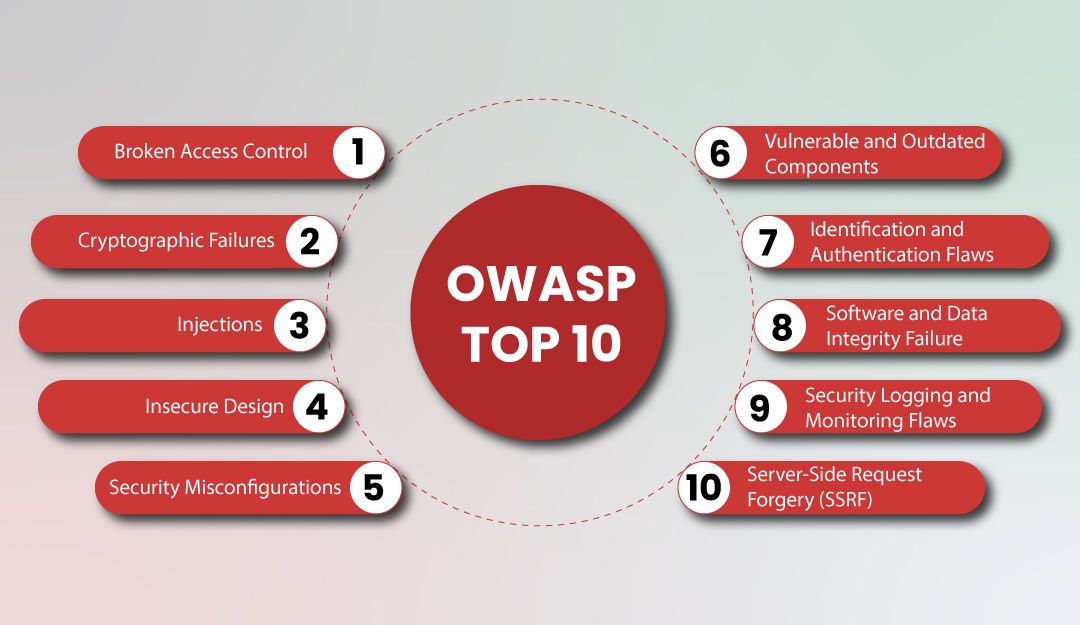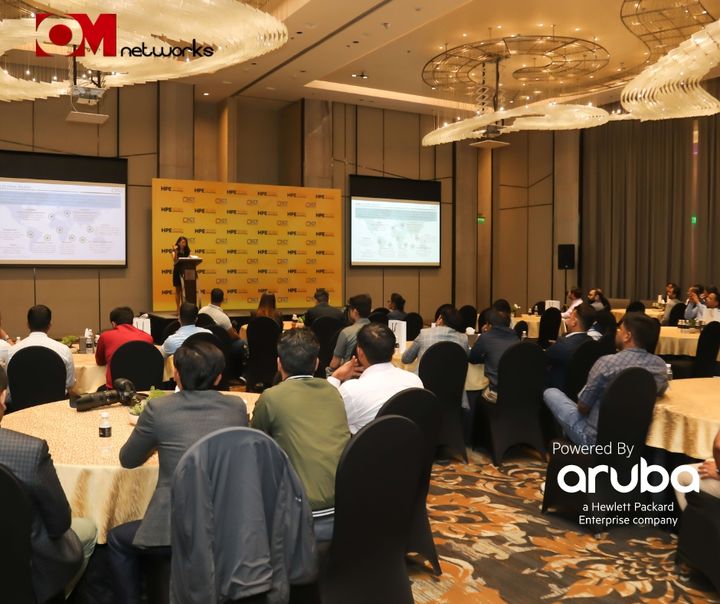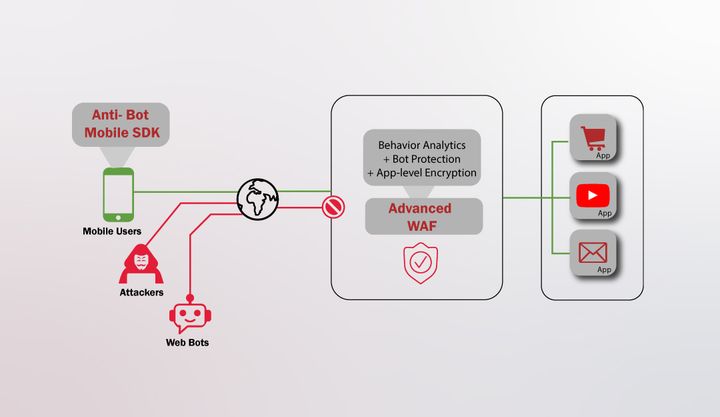OWASP Top 10: Understanding the Most Critical Application Security Risks

In today's interconnected world, application security is more important than ever. With the increasing amount of sensitive information being stored and transmitted through web applications, it's crucial for organizations to understand and address the most common and critical application security risks. That's where the OWASP Top 10 comes in.
The OWASP Top 10 is a widely recognized and widely referenced list of the most common and critical application security risks, updated periodically to keep pace with the evolving threat landscape. In this blog, we'll provide an overview of the OWASP Top 10 and explore each of the most critical security risks in detail, so you can take steps to protect your applications and sensitive information. Whether you're a developer, security professional, or just someone who wants to stay informed about the latest security trends, understanding the most critical application security risk can help you in protecting your business web application from potential cyber threats.
The OWASP Top 10 is a list of the most common and critical web application security risks. These risks are grouped into the following categories
- Broken Access Control
- Cryptographic Failures
- Injections
- Insecure Design
- Security Misconfigurations
- Vulnerable and Outdated Components
- Identification and Authentication Flaws
- Software and Data Integrity Failure
- Security Logging and Monitoring Flaws
- 10.Server-Side Request Forgery (SSRF)
OWASP Top 10: A Comprehensive Guide to Understanding the Most Critical Application Security Risks
Now lets understand each of them in brief
Broken Access Control
Access Controls are the security techniques through which organizations can restrict who gets access to use the data and other digital assets. There are two key components for access control : Authentication and Authorization. Authentication is all about verifying the user identity and Authorization is about allowing user to perform certain action.
Failure in implementing these controls can lead to broken access control. In this case users can get unauthorized access to sensitive information or unauthorized users performing the action that is out of their limits.
This can occur when an application does not properly restrict access to sensitive information or when an application does not properly authenticate users and when it does not properly check for authorization.
By leveraging broken access controls, attackers can gain unauthorized access to data, system, application, and networks. They can also use unauthorized access to view, modify and steal sensitive information and change access controls to setup other attacks.
Cryptographic Failures
This is a concern when encryption is not properly implemented or when encryption keys are easily accessible to attackers. This can result in sensitive information, such as login credentials or credit card numbers, being stolen.
Common Cryptographic failures can occur when encryptions is not used, when data is stored in plain text, when old cryptographic algorithms is used or default, old authentication keys are used.
When there is a cryptographic failure attackers can access to sensitive data and able to conduct attacks such as man in the middle attacks, phishing attacks, identity theft or conduct credit card frauds.
In order to protect your organizations from such attacks all you need to do is to encrypt everything, incoming and outgoing traffic with the latest encryption techniques or use of SSL Certificate with enhance security mechanism.
Injections
This occurs when untrusted data is sent to an interpreter as part of a command or query. The attacker's hostile data can trick the interpreter into executing unintended commands or accessing data without proper authorization.
Injection can often occur when attackers send malicious content or code to perform the action that is unauthorized. One of the common type of injection is SQL Injection. The SQL injection allows attackers to push malicious SQL queries into the entry field of application to gain access. Other types of injection include cross-site scripting (XSS), CCS injections, code injections, command injections, etc.
This type of vulnerabilities can be handle by using proper types of validation in the entry field of the application. All user inputs fields need to be validated before the application go live to prevent from injections.
Insecure Design
This is newly added to OWASP 10 list. Due to the insecure design of the application, attackers can compromise your system. The insecure design can weaken the security control system. Some of the factor that cause the insecure design flaws are insecure SDLC practices, use of outdated components, coding flaws and misconfiguration or flawed decision logic.
The insecure design can lead to sensitive data exposure or even the system compromise. and in order to prevent such things to happen security must be integrated in the early stage of SDLC and systems / applications need to be tested for vulnerabilities during System Development phases.
Security Misconfigurations
This is a common issue, as many applications are not properly configured to protect against known security risks. This can include failing to update software, leaving default accounts and passwords in place, or not properly securing data.
This can also occur when security controls and settings of the application are not properly defined or due to the outdated security configurations.
Vulnerable and Outdated Components
This is a concern when an application uses third-party components that have known security vulnerabilities or are outdated and no longer supported. This can also occur when we use unpatched, vulnerable and improperly configured components. This can allow attackers to exploit these vulnerabilities to gain access to sensitive information.
In order to get protected continuous scanning of components need to be carried out to find the possible vulnerability.
Identification and Authentication Flaws
This is a common security risk when an application does not properly authenticate users, or when session IDs are easily guessable or susceptible to session hijacking.
This can happen when weak, default, and well-known passwords allowed for authentications or when we use misconfigured multifactor authentication mechanism for identification.
Strong password policy enforcement and use of multifactor authentication can be the best practice to protect yourself from such vulnerabilities.
Software and Data Integrity Failure
This occurs when an application fails to maintain the integrity of software and data, such as when data is not properly encrypted or when software is tampered with.
Security Logging and Monitoring Flaws
Faster the security breaches are detected lower the damage. Without proper security logging mechanism, it will be difficult to identify the root caused of the attacks. Thus an applications need to keep track of each logs in proper format.
This type of risks occurs when an application does not properly log and monitor security events, such as login attempts or data access. This can make it difficult to detect and respond to security incidents.
Server-Side Request Forgery (SSRF)
This is a security vulnerability that allows an attacker to trick a server into sending a request to another server, such as a local network resource, on behalf of the user. This can be used to steal sensitive information or launch attacks.
In conclusion, the OWASP Top 10 is an essential resource for understanding and identifying the most common and critical application security risks. It is important for organizations to regularly review the list and take steps to protect their applications against these risks. This can include implementing proper security controls, regularly testing and monitoring for vulnerabilities, and staying up to date with the latest security best practices.
OM Networks can help organizations stay secure by providing a wide range of security services and solutions. These services can include security assessment, penetration testing, and vulnerability scanning, as well as implementing network, system and application security for your organization.
Additionally, OM Networks can provide you complete guidance on security best practices and threat intelligence to help organizations stay informed about the latest security risks and trends. With OM Networks' expert security team, organizations can have peace of mind that their applications and data are protected against the OWASP Top 10 and other security threats.




Comments ()